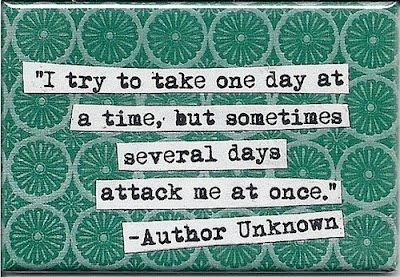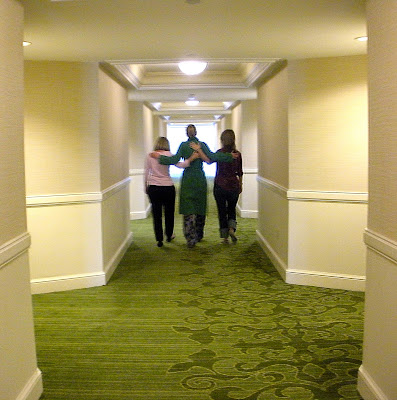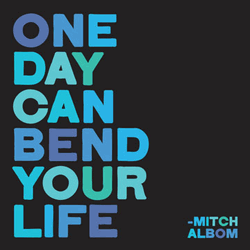DAY 1- Wednesday, Jan. 4th
PRE-OP
I arrived at the hospital at 9:30 AM. As soon as I got all of my paperwork taken care of, the nurses took me back to put on my hospital gown, treaded socks, compression hose and pneumatic boots, which inflated and deflated, to prevent blood clots. Next, I got my IVs, which included an antibiotic and corticosteriod. The nurse also put a patch on the back of my neck to help prevent nausea.
It was cold in the Pre-Op room, and the best thing ever was the blue Bair Paws Warming Gown I got to wear. It was my own personal heating system. A hose hooked directly into it, and it puffed up with warm air to keep me very comfortable. Once I was all settled, my Mom and Jay got to come back with me and wait until it was time for my surgery.
Thankfully, through lots of prayers and support from my family and friends, I had a real peace about the surgery. Normally, I would be a nervous wreck about something this life-changing. To put it in perspective, I've never even had a cavity. But, I knew I was doing exactly what I needed to do to change my life for the better. I had complete confidence in Dr. Piper and faith that everything would turn out exactly how it was supposed to be. It was out of my hands, and the only thing I could control was how I was feeling. I chose peace.
After a while the Anesthesiologist came to visit me, reviewed my chart and lab work, and started additional IV medications, which made me very tired.
Then, Dr. Piper came to check my chart and vitals, and to answer any last minute questions or concerns. Then, I was off...
FYI- The anesthesia medications make you forget everything between seeing Dr. Piper in Pre-Op and waking up in your hospital room.
Too bad the amnesia couldn't last the first 5 days ;)!
SURGERY
My surgery took 5 hours. Dr. Piper was great about letting my mom and husband know how I was doing. At two scheduled times (3:30 + 5:00 PM) he sent a nurse out to let them know things were going well. There was also a board that kept them posted on where I was from Pre-Op to Recovery.
TIP- Your family won't see you for about 7 hours. They will be worrying the whole time. Let them know how much you love and appreciate them. Make them Goodie Bags to help pass the time. I stuffed the bags with their favorite foods and candy and wrote them cards. Just stick them in your hospital bag, and as they are rolling you away for surgery, tell them that there is a little surprise in your bag for them. It will make them happy!
***
Below are the photos Dr. Piper took of my joints during my BILATERAL TMJ ANTHROPLASTIES WITH DISKECTOMIES AND AUTOLOGOUS FAT GRAFTS.
Both my
left and right joints had layers and layers of scar tissue, which Dr. Piper had
to remove in order to make room to insert the fat grafts into the joints. (The fat was extracted from my stomach.)

LEFT JOINT
Dr.
Piper said my displaced disk was buried in the surrounding muscle; he
surgically removed it from the muscle towards my cheekbone. The disk was
perforated and deformed.
Dr.
Piper explained that healthy bone and cartilage should be white. Because the disk was displaced (leaving no cushion between the condyle - the top portion of the jaw bone - and the base of the skull) my joint was functioning "bone on bone." My left condyle was very red, showing destruction and advanced damage, and the base of my skull was red and marred.
RIGHT JOINT
Although
I was also functioning "bone on bone" on my right side, the joint was not
as damaged as my left. Dr. Piper removed my right displaced and deformed disk.
He also noted that my right condyle was flat, soft, and inflamed.
HOSPITAL RECOVERY
I was told I spent a little over an hour in Recovery, where Dr. Piper monitored me, before I was reunited with my family in my hospital room. However, because of the anesthesia, I do not remember this period at all.
I kept ice wrapped around my face throughout my stay in the hospital.
TIP- Monitor your ice pack. Once the ice melts, all of the water goes to the bottom and it gets really heavy. This pulls on your ears and tubes, which can really start to hurt. My Mom and Jay were great about regularly asking the nurses for fresh ice.
To ensure there was no damage done to the fat grafts, I was securely banded and wired closed. For five days I could not remove the bands or the splint at all. (I'll wear the splint and bands for 9 months, taking it out for specific times, starting at 15 min. increments.) I had thick, foamy saliva, which made it hard to breathe out of my mouth, and lots of drooling when I used my syringe to drink.
TIPS- (1) Your mouth will get to feeling really yucky and slimy, so be sure to brush your bands and splint 5 times a day and swish with Listerine as much as you can. (Even when you do all of this, like me, you might get a Thrush infection on your tongue.) Don't stress about it. An anti-fungal prescription clears it up in a few days and it doesn't hurt at all. (2) Your lips will be super dry and crusty. Constantly apply medicated lip balm.
I had an oxygen tube during my hospital stay. This helped with my breathing. I also had bloody drainage from my nose from where they inserted the breathing tubes during surgery.
Tubes were placed on each side of my neck to drain the blood from the joint. Steri-strips covered my ear incisions, and I had two dissolvable stitches on each side of my face and neck where Dr. Piper had to use a clamp to move my jaw during surgery. We called these my whiskers, as they hung around for about a week and a half before they dissolved.
And, as a bonus, I received a new haircut. Dr. Piper shaved my sideburns and around the back of my ears for the surgery.

















































